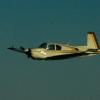What is the best PTT switch for original M20D yokes (no Yoking)
-
Members Online
- hubcap
- 52Yankee
- McMooney
- lanejacobs84
- Rocket_Driver
- Steve Dawson
- rrodriguzzi1
- Aviationist
- ericrynehess
- OSUAV8TER
- Parker_Woodruff
- 00-Negative
- wombat
- Tmooney
- milotron
- 47U
- Tom F
- SoccerCA
- PT20J
- 201er
- Rmfriday
- LANCECASPER
- Lax291
- 0TreeLemur
- ajudson
- DXB
- Bunti
- Paul Thomas
- bhtitle
- ElkoRandy20J
- RightrudderM20E
- GeeBee
- JB2000
- Boilermonkey
- Danb
- SilentT
- PeteMc
- philiplane
- navysix
- StevenL757
- Bobaran
- Adverseyaw0317
- Marc_B


Recommended Posts
Join the conversation
You can post now and register later. If you have an account, sign in now to post with your account.